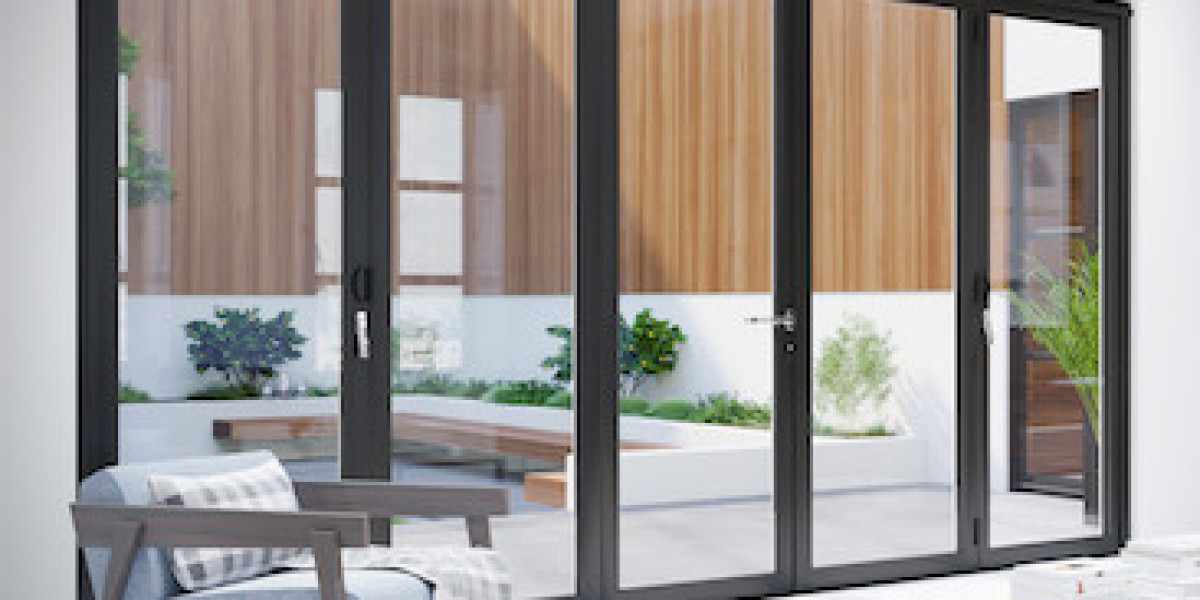Understanding and Repairing Bifold Door Brackets: A Comprehensive Guide
Bifold doors are a versatile and space-saving service for both property and industrial areas. They are typically used in closets, pantries, and room dividers due to their capability to fold nicely and use up very little area when open. However, like any mechanical system, bifold doors can experience wear and tear with time, particularly at the hinges and brackets. This article looks into the value of bifold door brackets, typical problems that emerge, and step-by-step guidelines for fixing them.
The Importance of Bifold Door Brackets
Bifold door brackets are essential parts that support the weight of the door panels and make sure smooth operation. These brackets are usually connected to the top and bottom of the door frame and are accountable for directing the doors as they fold and unfold. Without appropriately operating brackets, bifold door won't stay Closed doors can become misaligned, hard to open and close, or even fall off the track.
Typical Issues with Bifold Door Brackets
- Loose or Damaged Brackets: Over time, the screws that hold the brackets in place can loosen up, triggering the doors to sag or become misaligned.
- Damaged Hinges: The hinges within the brackets can use out, causing creaking noises and reduced performance.
- Misaligned Tracks: If the tracks are not effectively aligned, the brackets may not operate properly, causing the doors to bind or stick.
- Rust and Rust: Exposure to wetness can cause brackets to rust, which can deteriorate their structural stability and lead to failure.
Tools and Materials Needed for Repair
Before you start the repair process, collect the following tools and products:
- Screwdriver (Phillips and flathead)
- Drill and drill bits
- Adjustable wrench
- Lubing oil (such as WD-40)
- Replacement brackets (if necessary)
- Sandpaper (for rust removal)
- Paint or rust-resistant covering (if needed)
Step-by-Step Guide to Repairing Bifold Door Brackets
Examine the Brackets and Tracks
- Action 1: Open the bifold doors totally and check the brackets and tracks for any noticeable damage, loose screws, or misalignment.
- Step 2: Check the hinges within the brackets for wear and tear. Search for signs of rust, creaking, or tightness.
Tighten Up Loose Screws
- Step 1: Use a screwdriver to tighten up all screws on the brackets. Start from the top brackets and work your method down to the bottom.
- Step 2: If any screws are removed or harmed, remove them and utilize a drill to develop brand-new holes. Replace the screws with brand-new ones.
Lube the Hinges
- Step 1: Apply a few drops of lubricating oil to the hinges within the brackets. Move the doors backward and forward to distribute the oil uniformly.
- Action 2: Wipe away any excess oil with a clean fabric to avoid it from leaking onto the flooring or other surfaces.
Line up the Tracks
- Action 1: If the tracks are misaligned, use an adjustable wrench to loosen the screws that hold the track in location.
- Step 2: Gently adjust the track to guarantee it is level and straight. Retighten the screws to secure the track in its new position.
Replace Damaged Brackets
- Action 1: If any brackets are harmed beyond repair, remove them by unscrewing the screws that hold them in location.
- Action 2: Install the new brackets in the same position, ensuring they are securely secured with brand-new screws.
Remove Rust and Apply Protective Coating
- Step 1: Use sandpaper to eliminate any rust from the brackets and tracks. Sand until the surface area is smooth and without rust.
- Step 2: Apply a rust-resistant coating or paint to the brackets and tracks to prevent future deterioration.
Test the Doors
- Step 1: Once all repairs are complete, test the bifold doors by opening and closing them several times. Ensure they move efficiently and are appropriately lined up.
- Action 2: Make any last adjustments as required to guarantee ideal efficiency.
FAQs
Q: How typically should I check and preserve my bifold door replacement track door brackets?A: It is suggested to inspect and keep your bifold door brackets at least as soon as a year. Nevertheless, if you observe any signs of wear or malfunction, it is best to deal with the problem right away to avoid further damage.
Q: Can I oil the hinges with any type of oil?A: While any type of oil can offer some lubrication, it is best to utilize a premium lubricating oil such as WD-40. This kind of oil is particularly developed to reduce friction and avoid rust, making it ideal for bifold door hinges.
Q: What should I do if the tracks are bent or damaged?A: If the tracks are bent or harmed, it might be required to replace them. Consult the maker's instructions or an expert for assistance on how to replace the tracks.
Q: Can I paint over rust on the brackets?A: It is not suggested to paint over rust. Rust can continue to spread under the paint, causing further damage. Constantly get rid of rust with sandpaper before using a protective coating or paint.
Q: Are there any preventive measures I can require to extend the life of my bifold door stuck door brackets?A: Yes, routine maintenance is crucial. Keep the brackets and tracks clean and devoid of particles. Oil the hinges frequently, and look for loose screws or indications of wear. Resolve any problems quickly to avoid more major problems.
Bifold door brackets are vital for the smooth operation and durability of your bifold doors. By comprehending typical concerns and following the steps laid out in this guide, you can efficiently repair and maintain your bifold door brackets. Regular maintenance and prompt attention to any signs of wear will guarantee that your sliding bifold door track repair doors continue to operate properly for several years to come.









